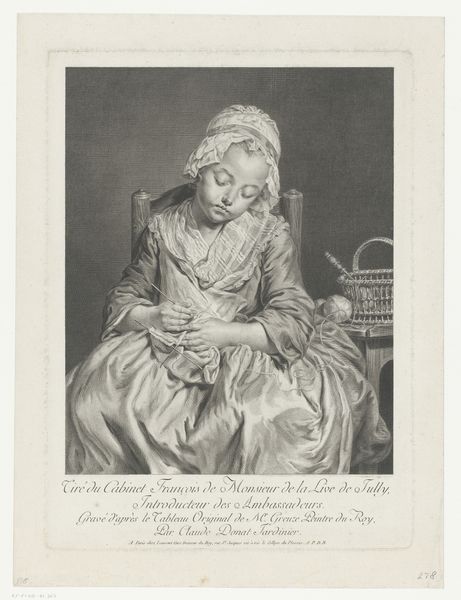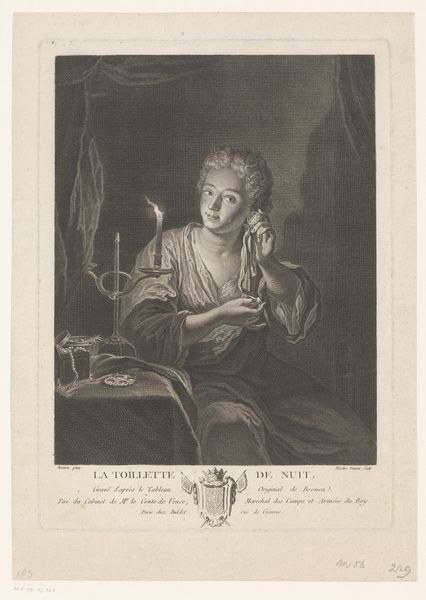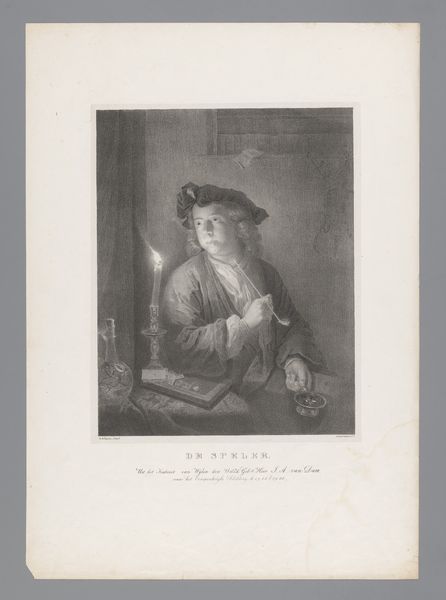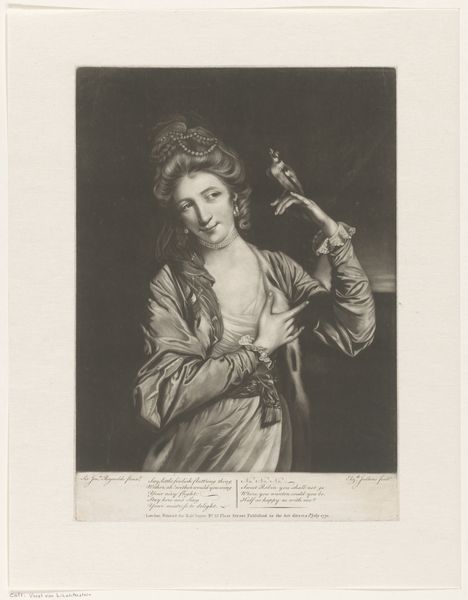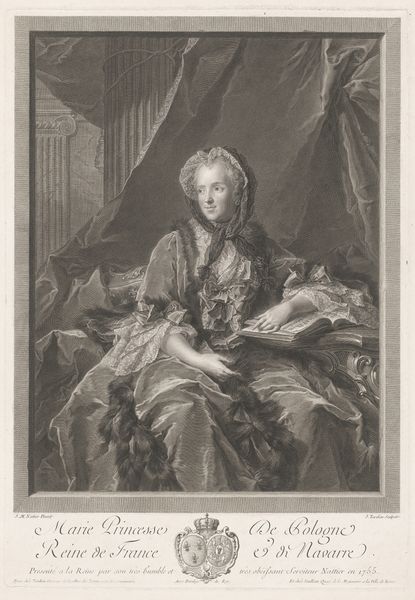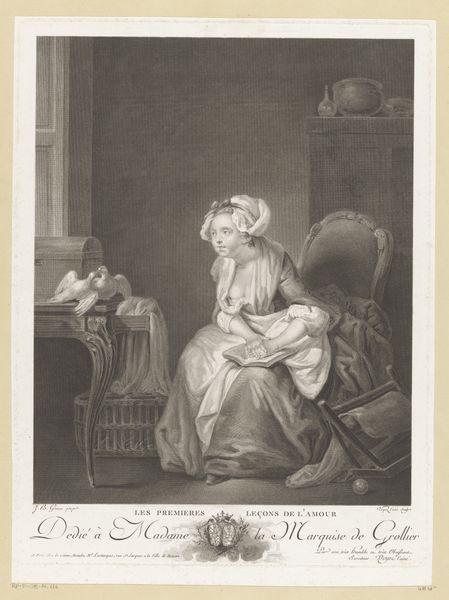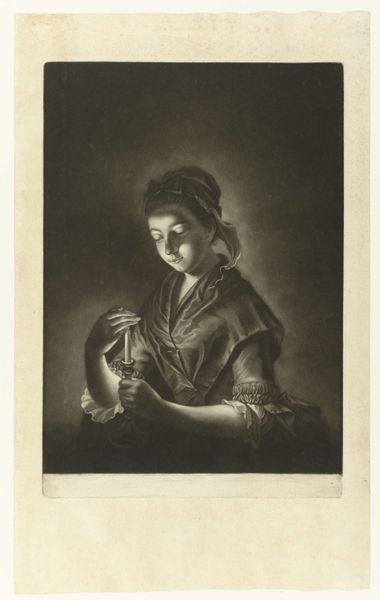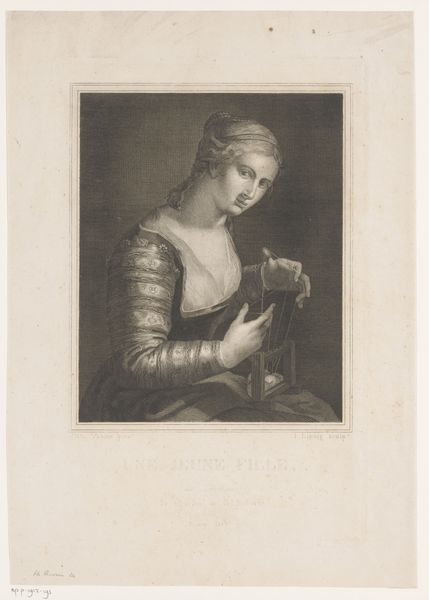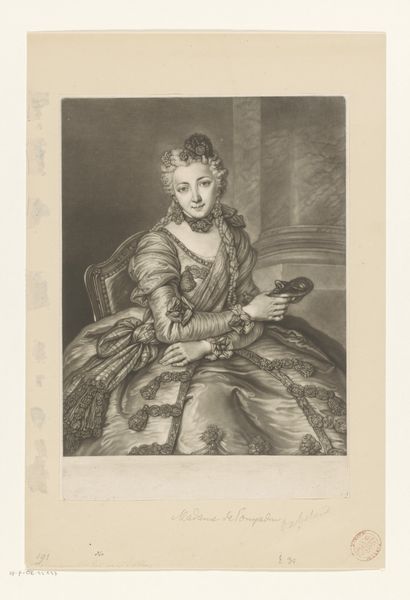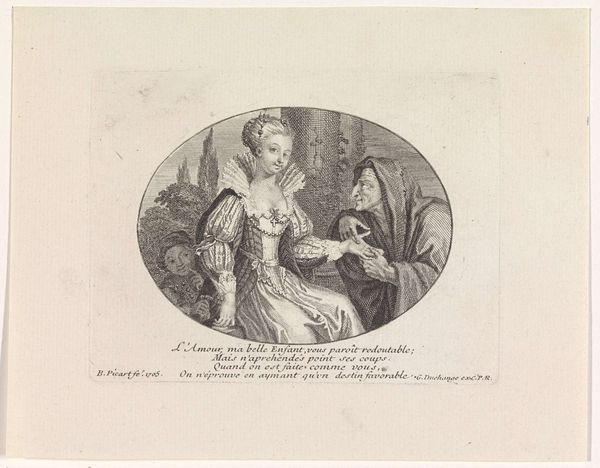
engraving
#
portrait
#
genre-painting
#
engraving
#
rococo
Dimensions: height 335 mm, width 247 mm
Copyright: Rijks Museum: Open Domain
Curator: An engraving by Jean Jacques Flipart from 1763, titled "Meisje met bol wol en kat." What do you notice? Editor: Well, first off, the texture in this engraving is incredible. The way he's captured the light on the girl's dress and the fur of the cat... it feels almost lifelike despite being black and white. It makes me wonder how he achieved this effect through line alone. What do you think is the key compositional element in play? Curator: I see it largely within the contrasting orientations—horizontal linearity across the figure’s garment, punctuated with a strong diagonal, falling left to right. The artist balances positive and negative spaces; note how the dark background intensifies the intricate textures of the foreground elements, as it creates emphasis. Can you identify how form is constructed in terms of semiotic organization and distribution? Editor: I suppose the careful arrangement of shapes and textures constructs a clear visual hierarchy, like the concentration of detail and activity around her face drawing our eye, versus the darkness of the upper background fading back. Curator: Exactly! The semiotics of shape is pivotal for decoding visual artworks: Observe how linear form structures rhythm of composition across the scene and elements are constructed across horizontal and diagonal orientations. The strategic placement is meant to highlight specific areas in an attempt to command the audience’s perception of a pictorial order. Editor: This way of deconstructing elements reminds me how essential the relationship between form and composition becomes. I see Rococo paintings very differently now, knowing I can decode a structured method with semiotic analysis! Curator: Yes, that's a valuable takeaway. By studying form we can unravel structure!
Comments
No comments
Be the first to comment and join the conversation on the ultimate creative platform.
